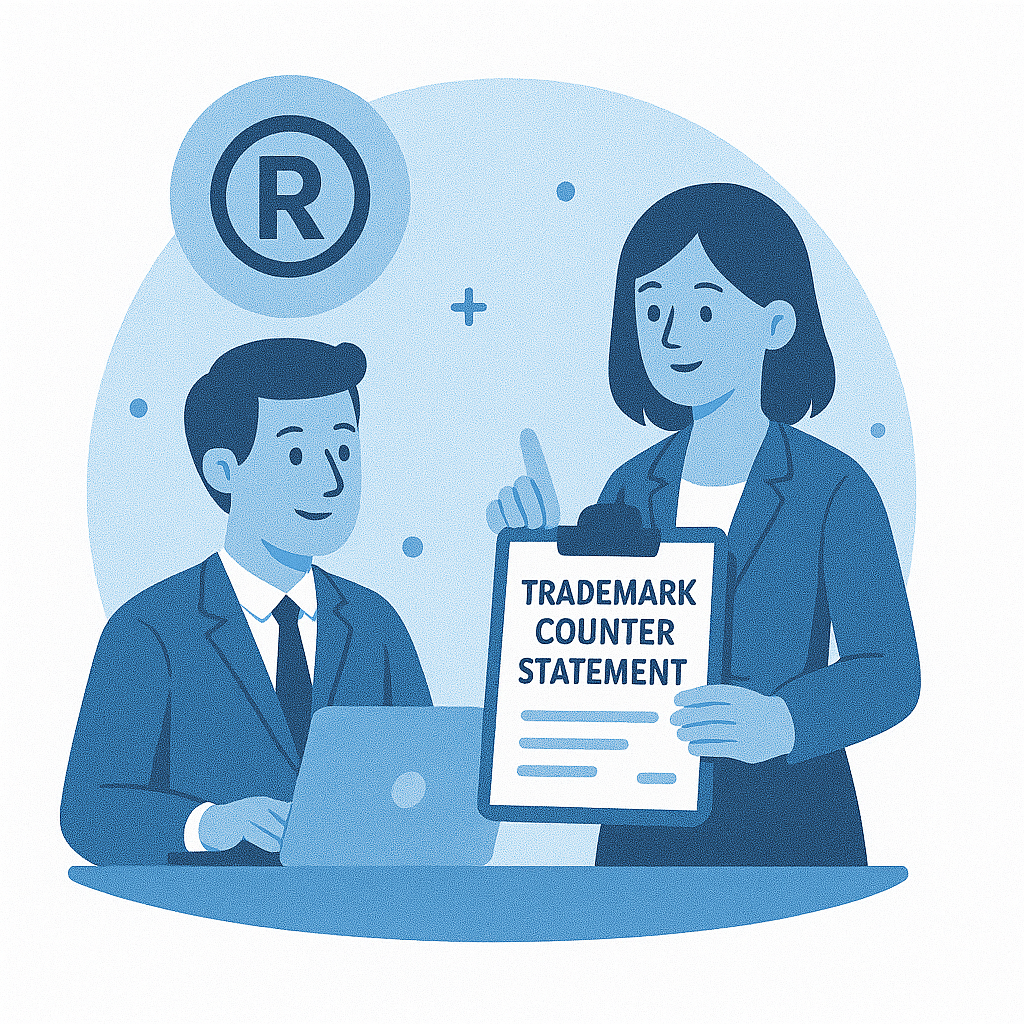
Trademark Counter Statement – Everything You Need to Know
A Counter Statement is the applicant’s formal reply to a Trademark Opposition Notice (Form TM-O). File it within 2 months of receiving the opposition to defend your application and avoid automatic abandonment.
What is a Trademark Counter Statement?
A Trademark Counter Statement is the applicant’s formal written reply to an opposition filed against their trademark application. It is filed using Form TM-O (Rule 44) and explains why the mark should be allowed registration — denying the opponent’s claims and submitting factual and legal grounds in defence.
Why is it Required?
- To formally contest an opposition and avoid automatic abandonment.
- To present facts, evidence and legal arguments supporting registration.
- To preserve exclusive rights to use and register the trademark.
- To clarify distinctiveness, prior use, and lawful adoption of the mark.
Documents Required for Filing a Counter Statement
Key documents & details to include with your counter statement
Form TM-O
Filled TM-O indicating it is the counter-statement (applicant’s reply).
Copy of Opposition
Copy of the opposition notice served by the Registry.
Application Details
Trademark application number, class and applicant details.
Statement of Defence
Detailed grounds denying opponent’s claims and factual narrative.
Supporting Evidence
Invoices, ads, packaging, dates of first use, marketing material, etc.
Power of Attorney
TM-48 if filing through an agent or attorney.
Contents of a Strong Counter Statement
A well-drafted counter statement normally contains:
- Acknowledgement of receipt of the opposition.
- Denial or admission of specific allegations with explanations.
- Facts of applicant’s case — date of adoption, date of first use, and markets served.
- Legal grounds asserting distinctiveness and lawful use.
- Request to dismiss the opposition and allow registration.
- Annexures — evidence, copies of invoices, advertisements and POA (if any).
Best Practices
- Respond within the 2-month deadline — do not delay.
- Address each allegation point-by-point with factual backing.
- Include documentary proof of use and distinctiveness early on.
- Use professional legal drafting to avoid inadvertent admissions.
Process of Filing a Trademark Counter Statement
Step-by-step workflow for the applicant
Receipt of Opposition Notice
Registry serves the applicant with a copy of the opposition (Form TM-O).
Draft the Counter Statement
Prepare a point-by-point reply denying or clarifying each allegation.
File Form TM-O (Counter)
Submit TM-O online at the IP India portal within 2 months of receiving the notice.
Attach Evidence (Optional)
Attach documents proving prior use, distinctiveness or registration.
Service to Opponent
Registry serves a copy of your counter statement to the opponent.
Proceedings Continue
Opposition evidence, applicant evidence, hearings and final order follow.
Timeline & Fee Structure
| Form Used | TM-O |
| Governing Section | Section 21, Trade Marks Act, 1999 |
| Deadline | Within 2 months from receipt of Opposition Notice |
| Government Fee (E-filing) | ₹2,700 per class |
| Processing Time | Typically 12–18 months (depends on hearings & evidence) |
⏳ Important: Missing the 2-month deadline will result in abandonment of your application.
Frequently Asked Questions (FAQs)
The applicant must file the Counter Statement within 2 months from receipt of the Opposition Notice.
Failure to file within 2 months results in automatic abandonment of the trademark application.
Form TM-O is used for the counter statement and related opposition proceedings.
Yes, but professional assistance from a Trademark Attorney is recommended for precise drafting and evidence strategy.
Yes — additional evidence can be filed during the evidence rounds subject to Registrar’s rules.
Yes. Parties may settle and withdraw the opposition at any stage, subject to Registry formalities.
Need Help Drafting a Counter Statement?
Our trademark experts draft, file and represent counter statements and manage the entire opposition lifecycle — ensuring your rights are vigorously protected.
Contact Our Experts